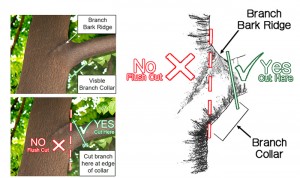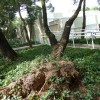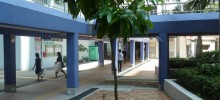
Pruning and tree supporting system
PruningTree Supporting System
Pruning
Proper pruning can lengthen the life span and maximize the greening effect of trees. However, improper pruning can damage the tree and cause potential tree failure in the future. Moreover, pruning should be conducted by qualified and certified tree workers to ensure the quality and safety.Type of Pruning
|
|
|
Incorrect Pruning & Impact
| Incorrect Pruning | Impact |
|---|---|
|
|
|
The natural tree form is destroyed and the risk of tree failure increased. |
|
Large reduction of crown size reduce the capacity of photosynthesis greatly and excessive growth of epicormic shoot may be resulted. |
|
Wound dressing cannot protect the wound and may disturb the formation of wound wood. |
|
The remaining stub may easily decay and induce pest growth and disease. |
|
Create a large wound may induce pest growth and disease. |
|
The ability of wound wood formation will be weakened |
|
Large wound is difficult to heal and may induce pest growth and disease. |
|
Jagged wounds heal badly and facilitate decay. |
Correct Pruning & Purposes
| Correct Pruning | Purpose |
|---|---|
|
Unnecessary pruning should be avoided as pruning creates wound unavoidably. |
| Damaging the branch collar may badly affect the wound wood formation. | |
| Avoid bark tearing | |
|
Clean cut can facilitate wound healing. |
|
To ensure the tree have sufficient foliage for healthy growth |
Do’s and don’ts in pruning Pruning tips
Tree Supporting System
Newly planted trees and defective trees have higher risk of tree collapse. Cabling and propping are the most common methods for tree supporting. Certified Arborist should be consulted before installing any supporting system.
Tree Supporting is Required
|
|
|
|
Improper Tree Support & Impact
| Improper Tree Support | Impact |
|---|---|
|
For the newly planted trees, the supporting system should be adjusted or removed after one year. |
|
Tree may be strangled by the tight cable. |
|
Tree with direct contact of the cable/prop may be damaged. |
|
Obstruct tree growth |
|
Regular adjustment of cable is needed to fit the tree growth. Inspection is also needed to ensure that the tree supporting system is in good condition. |
Proper planting practice – Staking and guying of trees





 Topping
Topping










 Pruning only when necessary
Pruning only when necessary

 Severe leaning
Severe leaning













